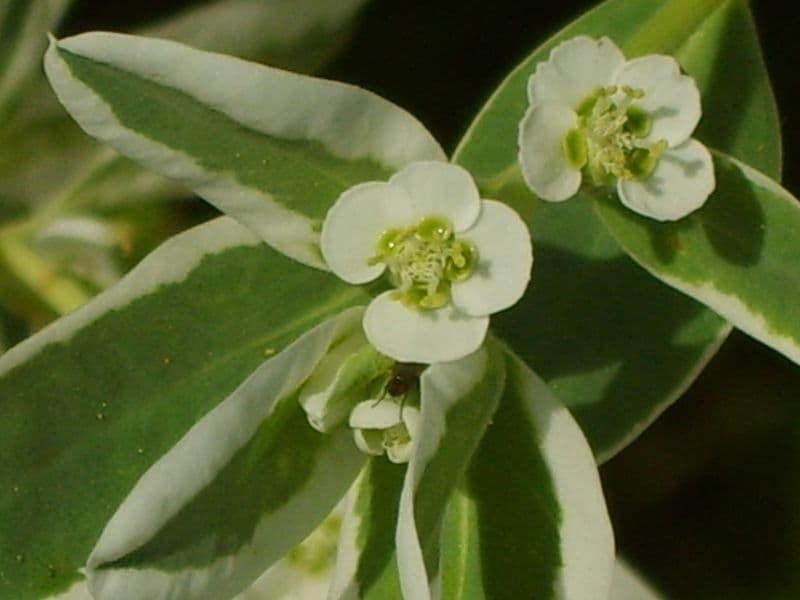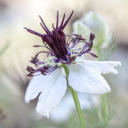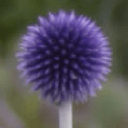Snow-on-the-mountain (Euphorbia marginata) is a resilient annual plant from the family Euphorbiaceae, native to regions spanning from the West Central and Central United States to East and South Mexico. Known for its ability to grow in challenging environments, this species often thrives in dark, shady areas where other plants may struggle.
The plant’s unique appeal lies in its striking foliage and flowers. Its leaves can appear in shades of white, light yellow, or variegated patterns, complementing its white flowers to create a snow-like appearance, which inspired its common name. Snow-on-the-mountain is an excellent choice for ground cover, adding beauty and texture to gardens with minimal effort.
| Common name | Snow-on-the-mountain |
| Botanical name | Euphorbia marginata |
| Family | Euphorbiaceae |
| Species | marginata |
| Origin | West Central & Central U.S.A. to East & South Mexico |
| Life cycle | Annual |
| Plant type | Annual |
| Sunlight | Full Sun |
| Maintenance | Low |
| Soil condition | Loam |
| Drainage | Well-Drained |
| Growth rate | Medium |
| Spacing | Less than 12 in. |
| Flowering period | Fall |
| Height | 1 ft. 6 in. – 3 ft. |
| Flower color | White |
| Leaf color | Green |
| Fruit color | Gray, Silver |
| Stem color | Green |
| Fruit type | Capsule |
| Flower benefit | Long Bloom Season |
| Garden style | Drought Tolerant Garden |
| Uses | Naturalized Area |
I. Appearance and Characteristics
Euphorbia marginata (commonly known as snow-on-the-mountain, smoke-on-the-prairie, variegated spurge, or whitemargined spurge) is a small annual in the spurge family.
It is native to parts of temperate North America, from Eastern Canada to the Southwestern United States. It is naturalized throughout much of China.
The type specimen was collected in Rosebud County, Montana from the area of the Yellowstone River by William Clark during the Lewis and Clark Expedition.

Snow-on-the-mountain has grey-green leaves along branches and smaller leaves (bracts or cyathophylls) in terminal whorls with edges trimmed with wide white bands, creating, together with the white flowers, the appearance that gives the plant its common names.
Snow-on-the-mountain has also been found to emit large quantities of sulfur gas, mainly in the form of dimethyl sulfide (DMS).
II. How to Grow and Care
Sunlight
Snow-on-the-mountain thrives in full sun conditions, benefitting from long hours of direct sunlight to promote vigorous growth and vibrant foliage coloration. While snow-on-the-mountain is tolerant of partial sun, the intensity of direct light positively impacts its health, resulting in better blooming and stronger resistance to pests. With less than optimal light, snow-on-the-mountain may exhibit reduced flowering and a leggier growth habit.
Ideally planted in open areas that receive unfiltered sunlight for most of the day, snow-on-the-mountain demonstrates resilience by adapting to moderate shade, although with some compromise to its ornamental qualities.
Temperature
Genus Euphorbia is very large and diverse, so its different species can be found in various habitats, but the majority are well-adapted to a temperature range of -29 to 4 ℃. Many spurges, in spite of having succulent leaves, cannot handle long periods without moisture and need to be watered weekly during hot summer days. Some cactus-like species are well adapted to high temperatures and prolonged dry periods, but most species used for landscaping and decorative gardening require more moisture for proper development.
Watering

Originating from the prairies of North America, snow-on-the-mountain is accustomed to a moderate watering regime, thriving in conditions that mimic its native environment’s periodic rainfall. This species exhibits a preference for a balance between moisture and drought tolerance, indicative of its prairie roots. For optimal growth, snow-on-the-mountain should receive watering every week. As an herbaceous plant, snow-on-the-mountain often favors outdoor cultivation where it can benefit from natural rain patterns; however, when grown indoors, ensuring adequate humidity is crucial to replicate its preferred microclimate.
Soil
Spurges aren’t picky when it comes to soil type. They can grow in a variety of soils. Some species of Euphorbia can even thrive in nutrient-poor soils, requiring only that the soil be well drained. If the soil is full of moisture and is prone to water retention, it will most likely cause root rot.
Fertilizing
For robust growth, snow-on-the-mountain thrives with a balanced fertilizer (e.g., 10-10-10) during early growth, transitioning to high-nitrogen formulations to support foliage. Fertilize monthly at quarter strength during active growth. Over-fertilization can cause leaf burn; always follow label rates. Fertilization halts in dormancy; resume with spring growth. Ensure even distribution to prevent root concentration. Appropriate fertilization enhances snow-on-the-mountain’s vigor and dense bracts.
Pruning
In early spring, if there are any damaged stems, they need to be removed to keep the plants healthy and to optimize their nutrient management. It is advised to cut back a certain number of stems after blooming in order to stimulate consistent flowering and growth of new foliage. When cutting a stem, cut at the stem’s base.

It is very important to use gloves while handling and pruning snow-on-the-mountain, because their tissues contain milky-white latex sap which is poisonous and can irritate the skin.
Propagation
Snow-on-the-mountain can be successfully grown from seeds, but the seeds are rarely commercially available because they are difficult to germinate and stay viable only for a short period of time. Snow-on-the-mountain is most commonly propagated via cuttings.
It is important to wear gloves while working with snow-on-the-mountain cuttings and to clean the pruning shears thoroughly after pruning, so that any unwanted contact with the sap is avoided. Before planting, it is necessary to leave the cuttings to dry for 2-3 days. This will prevent rot from developing and enable proper formation of the callus tissue. It is advised to plant the cuttings in a soilless medium, such as peat moss, because it provides an optimal environment for proper root development.
Cuttings should be misted regularly, and the pots in which they are planted need to be wrapped in either foil or a plastic bag to preserve moisture. The bag or foil needs to be removed for two hours each day to provide sufficient air and to prevent excess moisture in the medium. If this step is skipped, molds and rots can easily develop and damage the health of the young, sensitive cuttings. When the cuttings develop a root system, they are ready to be transplanted into soil.
Transplanting

For snow-on-the-mountain, the perfect season for transplanting is early spring (S1), when the soil is just beginning to warm up. This plant prefers fully sunlit locations with drained soil. Always remember, patience and gentleness during transplantation are key because they help maintain root structure integrity.
III. Uses and Benefits
Grown primarily for its showy foliage and bushy growth habit, snow-on-the-mountain is a refreshing focal point in flower beds and borders. It fits well into city and courtyard gardens, cottage gardens, and informal gardens. Due to its shrubby growth, it can create annual wall side borders and is also an interesting addition to cutting gardens (just beware of its poisonous sap if cutting).
IV. Harvesting and Storage
Some species of Euphorbia can be cut for fresh flowers or foliage, such as snow-on-the-mountain (Euphorbia marginata), Euphorbia fulgens and Euphorbiaformosana. When harvesting cuttings, remember to wear gloves, as the sap can be irritating to the skin. It can be cut from the base of the stem. Soak the end of the cutting in hot water for 10 seconds to stop the milky sap from oozing. The vase life for the cutting will be about 5-7 days, and some flower food can extend its life.

When the fruits of Euphorbia plants are ripe, they burst and scatter the seeds over a large surface area. In order to harvest all the seeds, the individual fruits or the entire plant must be wrapped in nylon, gauze, or similar material before the ripe fruit bursts and releases the seeds.
Find Where to Buy the Best Snow On The Mountain (Euphorbia marginata)


















Leave a Reply